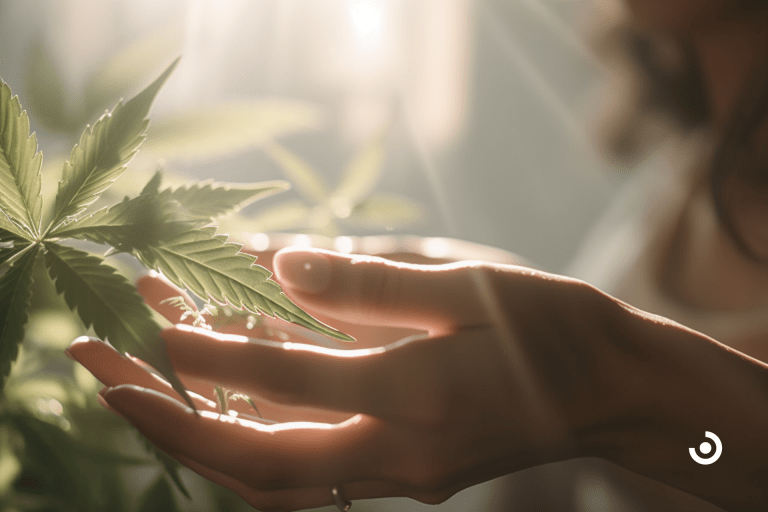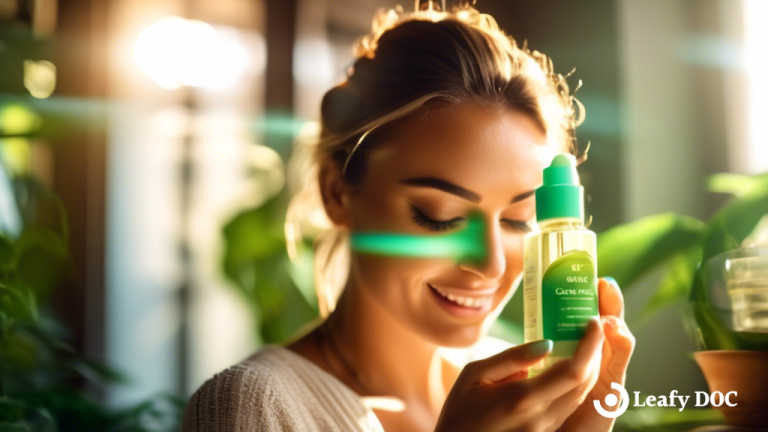Sleep Apnea
Can medical marijuana help patients who suffer from sleep apnea? Read on below to find out more.
What is sleep apnea?
Sleep apnea is a condition that causes you to stop breathing while you’re sleeping. Sleep apnea occurs when a person stops breathing during sleep due to a blockage of the airway or because the brain doesn’t correctly control breathing. The resulting lack of oxygen activates a survival reflex that wakes you up and interrupts sleep. This can place stress on your heart, which can have potentially fatal consequences.
Causes & Symptoms
Sleep apnea typically has specific causes, and there’s evidence that it may be genetic. There are three primary forms of sleep apnea, with some differences in how and why they occur. The three types are:
- Central sleep apnea (CSA)
- Mixed/complex sleep apnea
- Obstructive sleep apnea (OSA)
Sleep apnea symptoms may include the following:
- Feeling tired or even exhausted when waking up.
- Daytime sleepiness.
- Snoring. Though, it is common among people without sleep apnea.
- Mood changes like depression and anxiety.
- Disruptions in cognitive function.
- Waking up repeatedly in the middle of the night.
- Pauses in breathing while asleep that others witness.
- Unusual breathing patterns.
- Insomnia.
- Sweats and feeling restless at night.
- Sexual dysfunction.
- Waking up feeling short of breath or like you’re choking.
- Headaches, especially when waking up.
Is sleep apnea common?
Sleep apnea is uncommon but known worldwide. It affects about five to ten percent of the global population.
Diagnosis and Treatment
Diagnosing sleep apnea typically involves a doctor asking about your symptoms, medical records, and family history. If they suspect sleep apnea, they’ll likely ask you to undergo overnight testing for sleep apnea.
Possible sleep apnea treatments include:
- Conservative nonmedical treatments
- Positive airway pressure
- Adaptive ventilation devices
- Oral appliances or mouthpieces
- Nerve stimulators
- Surgery
- Prescription Medications
What is insomnia?
Insomnia is a sleep disorder that is common among American adults. This condition can make it hard to fall and stay asleep throughout the night. Patients report being tired when waking, which can affect energy levels, mood, work performance, quality of life, and overall health.
Most adults need seven to eight hours of sleep a night, although that varies per individual. Simple changes in daily habits can help get your sleep cycle back on schedule, although sometimes alternative treatments are needed.
How do cannabinoids affect sleep?
A recent study reported that cannabis shortens the time it takes to fall asleep, both for sleep problems and for people who fall asleep without trouble.
Many researchers agree that the sleep-enhancing effects of cannabinoids are due to their interactions and how they bind with cannabinoid receptors in the human brain. When cannabinoids bind to these receptors, they send messages to increase adenosine levels and suppress the brain’s arousal system. Combined, these two effects may help cannabis users feel tired, so there is less time counting sheep and more time dreaming.
Terpenes for Sleep Aid
Terpenes are small molecules in cannabis buds that create their smell and taste. Terpenes are found in many natural plants, fruits, and flowers other than cannabis. Over a hundred unique terpenes have been identified, and various combinations of terps in different strains of cannabis create distinctive flavors and aromas. Scientific research shows terpenes can also affect energy, mood, sleepiness, and alertness.
Some of the most common terpenes for sleep aid are:
- Myrcene. This terpene is commonly occurring in cannabis; this terpene is also found in many fruits and herbs, including mangoes, basil, thyme, lemongrass, and the sleep-promoting plant’s hops and ylang-ylang. Myrcene has been shown to have anti-inflammatory and soothing effects.
- Caryophyllene. This anxiety and chronic pain-relieving terpene may promote sleep due to its relaxing, analgesic properties. It has a spicy aroma found in cloves and black pepper.
- Limonene. According to research, this citrus-flavored terpene, found in citrus peels and cannabis, and other plants, has reduced anxiety and stress. Limonene may contain anti-depressant effects and could reduce OCD symptoms. Scientists think limonene’s calming, mood-lifting results come from its ability to elevate serotonin levels in the brain. That may also make this terpene a sleep promoter.
- Terpineol. This terpene has relaxing, sedative effects and can also be found in lilac, pine, and eucalyptus.
- Linalool. This lavender-scented terp can be found in many plants, including cannabis. Studies show linalool can reduce anxiety and depression symptoms and help guard the immune system against stress damage. Linalool increases adenosine, a sedating hormone that helps us fall asleep.
American Sleep Association
According to the American Sleep Association, up to seventy million Americans experience sleep disorder symptoms. The same study shows that forty million U.S. adults experience insomnia every year, and approximately ten to fifteen percent will deal with chronic insomnia at some point in their lives.
Sleep Needs By Age Group
- Adult: 7 – 9 hours
- Teenager: 8 – 10 hours
- Child 6 – 12 years: 9- 12 hours
- Child 3 – 5 years: 10 – 13 hours
- Child 1 – 2 years: 11 – 14 hours
- Infants 4 -12 months: 12 – 16 hours
How to Prepare for Bedtime
A few ways to promote melatonin production and get better sleep include:
- Allow natural light into the room during the day
- Close blinds and shut out any light before bed
- De-clutter the room
- Take a warm bath or shower
- Apply essential oil pillow mist
- Turn on a diffuser with lavender
- Light stretching
- Meditation
- Limit screen time and blue lights
- Dim lights around the house
- Turn the a/c to cooler temps
- Use an air humidifier or fan for noise
- Turn on beach or rain sounds for sleep aid
- Early morning behavior should include self-care and little screen time
Can medicinal cannabis help?
High CBN cannabis is commonly known as a less potent version of THC. THC components in the cannabis plant break down as they age, forming a less potent cannabinoid called CBN.
It’s about 25 percent as effective as THC, and CBN products offer milder effects. CBN increased in dosage can produce mild psychoactive reactions because CBN acts similarly to THC cannabinoids when activated. CBD and CBN can produce psychoactive results if they are derived from marijuana plants.
Cannabinol (CBN) is a cannabinoid. Cannabinoids essentially mimic the endocannabinoid system, such as anandamide. Anandamide is a fatty acid that activates the receptors. Cannabinoids bind themselves to fat-soluble molecules to enter a cell’s lipid bilayer.
Cannabinoids attach themselves to CB1 and CB2 receptors. However, CBN only interacts with CB1 receptors causing sedative properties. CB1 receptors are found in the areas of the brain that control pain perception, movement, memory, cognition, emotion, and autonomic functions. CB2 receptors are typically found in immune system cells. When the proper connection between cannabinoid and receptor is made, the body is stimulated to have a specific response.
CBN works by binding to CB1 cannabinoid receptors, where it’s thought to strengthen the function of anandamide. This neurotransmitter enhances pleasure and motivation, regulates appetite and sleep quality, and alleviates chronic and myofascial pain. Unlike THC, the CBN that cannabis plants produce won’t get you high. CBN is a non-psychoactive minor cannabinoid. CBN interacts with the psychoactive properties of THC to offset its effects; however, it can be used as a sleep aid due to its sedative effects.
Last Updated: June 14, 2024
Get Your Medical Card
Connect with a licensed physician online in minutes
Table of Contents
Keep Reading
-
11 Health Benefits Of Cannabis Topicals
Unlock the healing potential of cannabis topicals! Learn about 11 amazing health benefits, from pain relief to skincare. Click now and change your life with these incredible remedies.
-
Stay Motivated During Your Workout With Marijuana Strains
Enhance your workout motivation with the perfect motivating marijuana strains. Find out how to stay focused and energized during exercise sessions. Click here to discover the best strains for your fitness routine!
-
The Benefits Of Cannabis Topicals For Skincare
Transform your skincare routine with the incredible benefits of cannabis topicals! Explore how these products can give you healthy, glowing skin like never before. Click to learn more about using cannabis-infused skincare for a radiant complexion!



